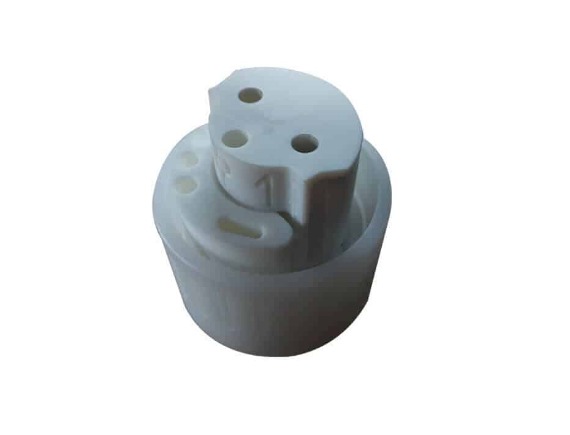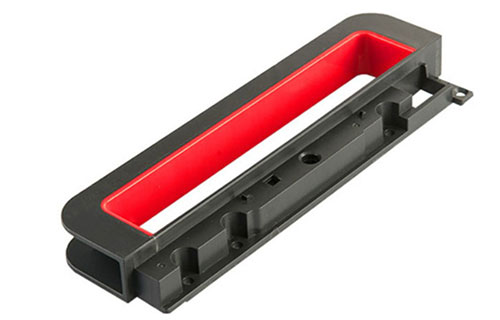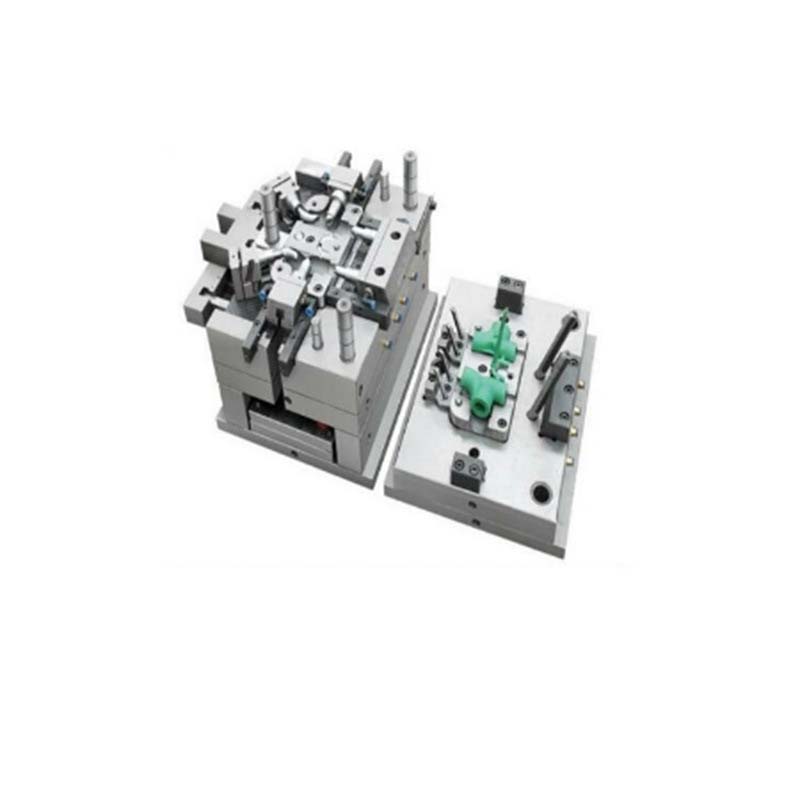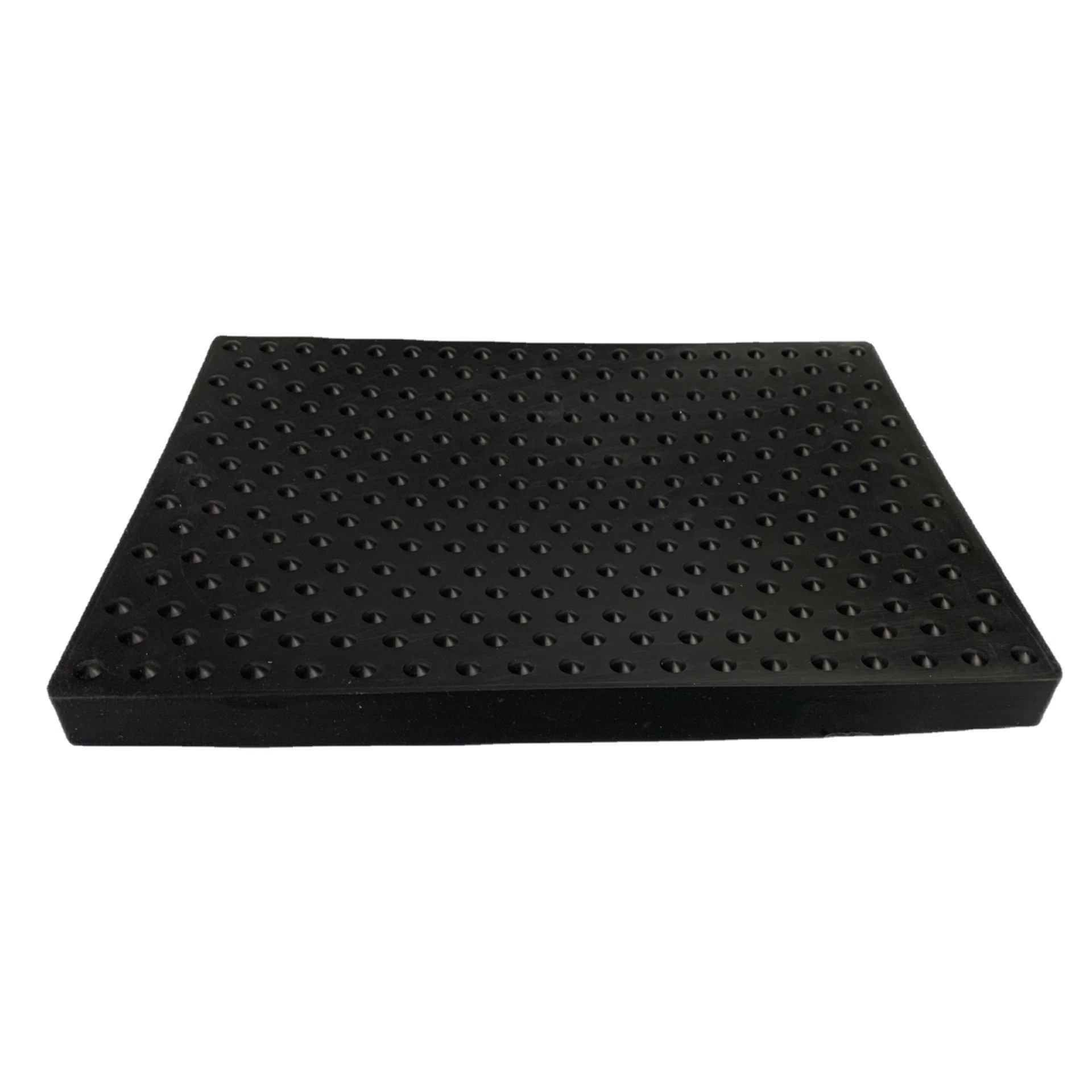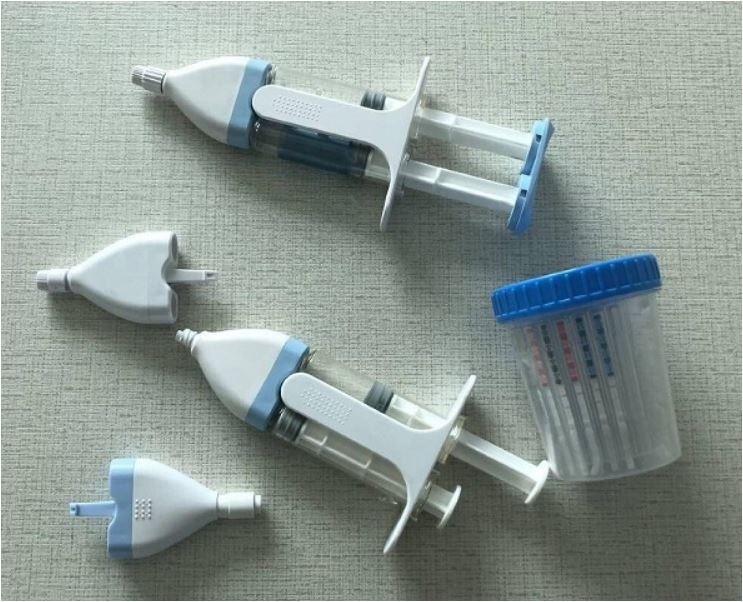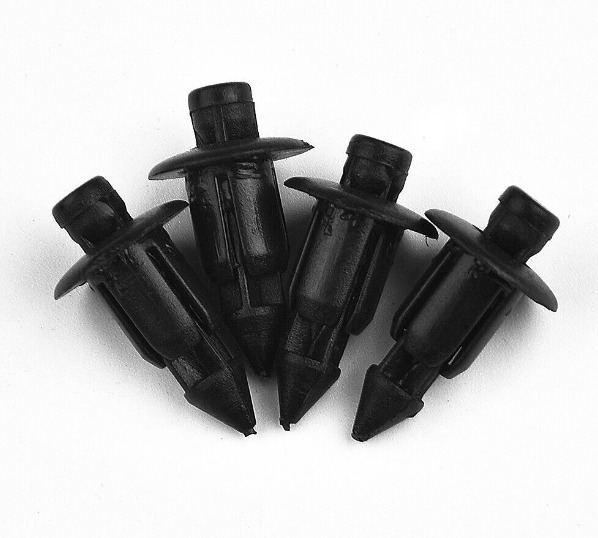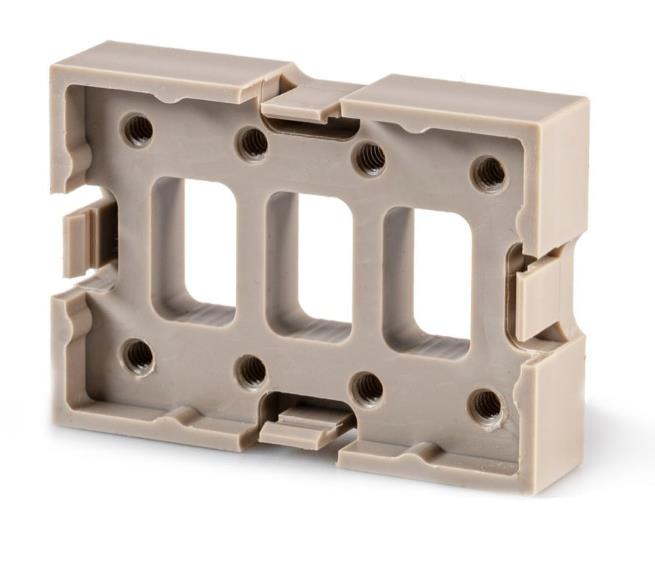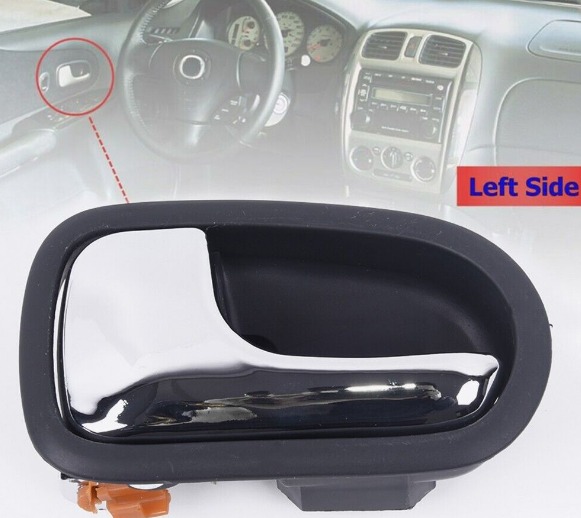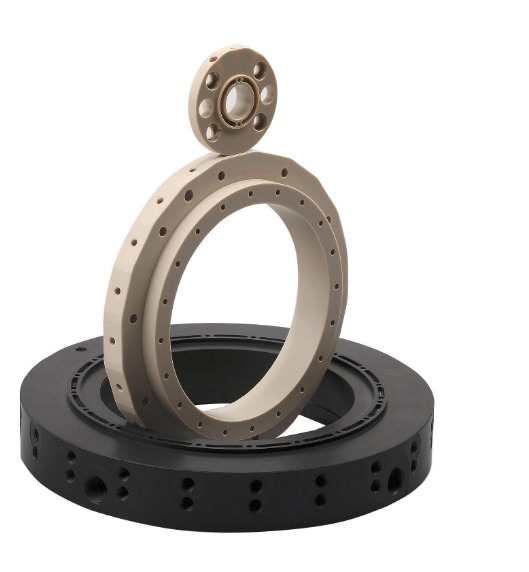Introduction
What is Aerospace Injection Molding?
Aerospace injection molding is a specialized manufacturing process that involves injecting molten plastic materials into a mold cavity to create precise and high - performance components for the aerospace industry. This process is a subset of the broader injection molding technique, but it is tailored to meet the stringent requirements of aerospace applications.
In a typical aerospace injection molding process, high - quality thermoplastic polymers are first heated to a molten state. These materials can include advanced polymers like PEEK (Polyether Ether Ketone), which is known for its excellent mechanical properties, high - temperature resistance, and chemical stability. The molten plastic is then forced under high pressure into a meticulously designed mold. The mold is typically made of high - grade steel or other durable materials to withstand the high pressures and temperatures involved. Once the plastic fills the mold cavity, it cools and solidifies, taking on the exact shape of the cavity. After the plastic has fully solidified, the mold is opened, and the finished component is ejected.
The importance of aerospace injection molding in the aerospace sector cannot be overstated. First, it enables the production of complex - shaped components with tight tolerances. For example, interior components of an aircraft, such as air ducting systems, often require intricate geometries to optimize air flow. Aerospace injection molding can create these components with a precision of up to ±0.001 inches, ensuring that they fit perfectly within the aircraft's overall structure.
Secondly, injection - molded parts can be produced in high volumes. In the aerospace industry, where thousands of identical components may be needed for a single aircraft model, the ability to mass - produce with consistent quality is crucial. This not only reduces production time but also helps in cost - control. For instance, a large - scale aerospace manufacturer might produce tens of thousands of plastic fasteners using injection molding for a particular aircraft series.
Finally, the materials used in aerospace injection molding offer a combination of lightweight properties and high strength. Since weight is a critical factor in aircraft design (every additional pound can increase fuel consumption), the use of lightweight yet strong plastics can significantly improve an aircraft's fuel efficiency and overall performance. For example, replacing heavier metal components with injection - molded plastic parts can lead to a reduction in the aircraft's overall weight by up to 30% in some cases, resulting in substantial long - term cost savings in fuel.
As we move forward, we will explore the key considerations that designers must keep in mind when working with aerospace injection molding, from material selection to design for manufacturability.
Key Aspects of Aerospace Injection Molding for Designers
Understanding the Injection Molding Process
The injection molding process for aerospace components is a complex and highly - regulated procedure.
- Plastic Material Preparation: First, the plastic raw materials are carefully selected. These materials are often high - performance thermoplastics. They are then dried to remove any moisture. Moisture in the plastic can cause defects such as bubbles and voids in the final product. For example, if PEEK (Polyether Ether Ketone) is used, it needs to be dried at a specific temperature and for a certain period to ensure optimal molding conditions.
- Heating and Melting: The dried plastic pellets are fed into the injection molding machine's hopper and then into the heated barrel. Inside the barrel, the plastic is heated to its melting point. The temperature is precisely controlled. For instance, for a material like polycarbonate (PC), the melting temperature usually ranges from 220 - 260°C. This melting process is crucial as it determines the flowability of the plastic during injection.
- Injection: Once melted, the plastic is forced under high pressure through a nozzle into the closed mold cavity. The injection pressure can vary widely, often ranging from 50 - 200 MPa, depending on the complexity of the part and the material used. High - pressure injection ensures that the plastic fills every detail of the intricate mold cavity accurately.
- Cooling and Solidification: After the mold is filled, the plastic is allowed to cool. Cooling channels within the mold help dissipate heat evenly. The cooling time is carefully calculated. A longer cooling time is required for thicker - walled parts. During this stage, the plastic solidifies and takes on the shape of the mold cavity.
- Mold Opening and Part Ejection: When the plastic has fully solidified, the mold opens, and the finished part is ejected using ejector pins. These pins are strategically placed to ensure that the part is removed without damage.
- Post - processing: Post - processing steps may include trimming excess plastic, polishing, and surface treatment. For example, parts may be coated with a special material to enhance their resistance to wear and corrosion. Each step in this process has a direct impact on the final product's quality, from dimensional accuracy to surface finish and mechanical properties.
Material Selection
Selecting the right material for aerospace injection molding is critical. Here are some commonly used materials and their characteristics:
| Material | Strength | Heat Resistance | Chemical Resistance | Advantages | Disadvantages |
| PEEK (Polyether Ether Ketone) | High - excellent mechanical strength | High - can withstand temperatures up to 260°C continuously and 300°C for short periods | Excellent - resistant to most chemicals | Lightweight, high - strength, and high - temperature resistance | High cost, difficult to process |
| PC (Polycarbonate) | Good - high impact strength | Moderate - can be used continuously at around 120 - 130°C | Fair - resistant to many common chemicals but can be attacked by some solvents | Transparent, high - dimensional stability, good electrical insulation | Susceptible to stress cracking in the presence of certain chemicals |
| PA (Polyamide, Nylon) | Good - high tensile strength and toughness | Moderate - typical use temperature around 80 - 100°C | Fair - resistant to many oils and fuels | Good wear resistance, self - lubricating | Absorbs moisture, which can affect its properties |
When choosing a material, designers should consider the part's operating environment, such as temperature, chemical exposure, and mechanical stress. They should also take into account manufacturing requirements like processability and cost - effectiveness.
Design Considerations
Wall Thickness
Wall thickness is a crucial design factor. A proper wall thickness ensures the part's structural integrity and manufacturability. If the wall is too thin, it can lead to issues like short shots (incomplete filling of the mold) during injection molding due to the high resistance of the plastic flow. On the other hand, a wall that is too thick will increase the cooling time significantly, which not only lengthens the production cycle but also may cause internal voids, sink marks, and higher material costs.
Here is a table showing the suitable wall thickness ranges for common plastic materials:
| Material | Minimum Wall Thickness (mm) | Maximum Wall Thickness (mm) |
| PE (Polyethylene) | 0.9 | 4.0 |
| PP (Polypropylene) | 0.6 | 3.5 |
| PA (Polyamide) | 0.6 | 3.0 |
| PS (Polystyrene) | 1.0 | 4.0 |
| ABS (Acrylonitrile - Butadiene - Styrene) | 1.5 | 4.5 |
| PC (Polycarbonate) | 1.5 | 5.0 |
| POM (Polyoxymethylene) | 1.5 | 5.0 |
To improve the part's strength without increasing wall thickness, designers can use design curves or add ribs. For example, in the design of an aircraft interior panel, adding ribs at regular intervals can increase the panel's stiffness while keeping the overall weight down and reducing material usage and molding time.
Avoiding Thin Sections and Weak Designs
Thin sections and weak designs in the mold should be avoided. Thin sections are prone to breakage during the injection molding process due to the high pressures involved. A weak design can lead to premature failure of the mold or result in products with low structural integrity. For example, in a mold for an aerospace connector, if the connection points are designed with thin walls and insufficient reinforcement, the connector may break during assembly or under normal operating conditions.
**
Draft Angles
Draft angles are essential in injection molding. A draft angle is a slight taper on the sides of a molded part that allows it to be easily removed from the mold. Without an appropriate draft angle, the part may get stuck in the mold, and attempts to eject it can cause the part to be damaged, such as being scratched or even broken.
For different shapes of parts, the recommended draft angles are as follows:
- For smooth - surfaced parts, a draft angle of 0.5° - 1° is usually sufficient.
- For parts with a textured surface, a draft angle of 1° - 2° is recommended.
- For deep - walled parts, a larger draft angle, around 2° - 3°, may be required.
For example, in the design of an aircraft air duct, a draft angle of 1° is added to the inner and outer walls of the duct to ensure that it can be smoothly ejected from the mold after the injection process.
Ribs and Bosses
Ribs and bosses play important roles in enhancing the strength and functionality of injection - molded parts. Ribs are thin, elongated structures added to the part to increase its stiffness and strength. When designing ribs, their location, direction, and height are crucial. They should be placed in areas where additional strength is needed, such as along the edges or across large flat surfaces. The height of the rib should be carefully considered, usually not exceeding 3 - 4 times the wall thickness to avoid causing sink marks on the opposite side of the wall.
Bosses are circular or other - shaped protrusions on the part, often used to provide a location for screws, inserts, or to reinforce a specific area. The size and shape of the boss should be designed according to its intended function. For example, a boss for a screw should have an appropriate diameter and height to ensure a secure fit for the screw.
In the design of an aircraft seat bracket, ribs are added along the length of the bracket to increase its load - bearing capacity, and bosses are designed at the connection points to provide a stable location for attaching the seat to the aircraft floor.
Yigu Technology's View
As a non - standard plastic metal products custom Supplier, Yigu Technology has a deep - seated understanding of aerospace injection molding. In terms of material selection, we have extensive experience in sourcing and evaluating high - performance plastics suitable for aerospace applications. Our team is well - versed in the characteristics of materials like PEEK, PC, and PA, and we can precisely match the right material to the specific requirements of each project, taking into account factors such as temperature resistance, chemical stability, and mechanical strength.
Regarding design optimization, Yigu Technology's design engineers use advanced software and simulation tools. We can simulate the injection molding process in advance, predicting potential issues like uneven cooling, flow marks, or insufficient filling. This allows us to make design adjustments early on, ensuring the final product meets the highest standards of quality and functionality. For example, we can optimize rib and boss designs to enhance part strength while minimizing material usage.
In terms of quality control, we have a rigorous system in place. From raw material inspection to in - process monitoring and final product testing, every step is strictly supervised. We use high - precision measuring equipment to ensure dimensional accuracy and conduct comprehensive performance tests to verify the product's compliance with aerospace standards. Yigu Technology is committed to providing customized solutions for aerospace injection molding, working closely with clients from the initial design concept to the final production, to meet their unique needs and contribute to the success of their aerospace projects.
FAQ
What are the main differences between injection molding and other molding methods?
- Principle: Injection molding injects molten plastic into a closed mold cavity under high pressure. In contrast, extrusion molding forces molten plastic through a die with a specific cross - sectional shape to create continuous profiles like pipes or sheets. Blow molding, on the other hand, inflates a parison (a pre - formed tube of plastic) inside a mold cavity using air pressure to form hollow objects such as bottles.
- Process: Injection molding involves heating plastic, injecting it, cooling, and ejecting the part. Extrusion is a continuous process where plastic is continuously fed through the extruder, shaped by the die, and then cooled and pulled away. Blow molding first creates a parison, which is then placed in a mold and inflated.
- Suitable Materials: Injection molding can use a wide range of thermoplastics, including high - performance ones like PEEK. Extrusion is mainly suitable for thermoplastics that can be easily melted and extruded, such as polyethylene (PE) and polypropylene (PP). Blow molding typically uses materials with good stretchability and flexibility, like low - density polyethylene (LDPE) for making plastic bottles.
- Product Characteristics: Injection - molded parts can have complex shapes and high precision, suitable for components with tight tolerances. Extruded products are usually long - shaped with a constant cross - section. Blow - molded products are hollow and often used for containers, with relatively lower dimensional precision compared to injection - molded parts in some aspects.
How to choose the right plastic material for aerospace injection molding?
- Performance Requirements: Consider strength to withstand mechanical stress during flight, such as high - strength PEEK for parts in high - stress areas. Heat resistance is crucial as aircraft components can experience high temperatures, so materials like PEEK (with high continuous - use temperature) are favored. Chemical resistance is also necessary to resist fuels, lubricants, and other chemicals in the aerospace environment.
- Cost: High - performance materials like PEEK are expensive. If the part doesn't require extreme performance, more cost - effective materials like polycarbonate (PC) might be considered, provided they meet the basic requirements.
- Processing Performance: The material should be easily processable by injection molding. Some materials might have high viscosity, which can make injection difficult. For example, PEEK requires careful temperature and pressure control during processing due to its high melting point and viscosity.
- Aerospace Standards and Specifications: Ensure the material complies with aerospace - specific standards, such as flame resistance, outgassing limits (important in a sealed spacecraft environment), and mechanical property requirements set by organizations like the FAA (Federal Aviation Administration) in the United States.
What are the common mistakes designers make in aerospace injection molding design and how to avoid them?
- Ignoring Wall Thickness Uniformity: Designers may create parts with uneven wall thicknesses. This can lead to issues like sink marks, internal voids, and uneven cooling. To avoid this, maintain consistent wall thickness as much as possible. If thickness changes are necessary, use smooth transitions.
- Not Considering Draft Angles: Forgetting to add draft angles makes it difficult to eject the part from the mold, potentially causing damage. Always add appropriate draft angles (usually 0.5° - 3° depending on the part) during the design phase.
- Poor Reinforcement Design: Designing weak or ineffective ribs and bosses, such as ribs that are too tall or bosses that are too small for their intended function. When designing ribs, keep their height within 3 - 4 times the wall thickness and place them strategically. For bosses, ensure they are sized correctly for the intended connection or reinforcement.
